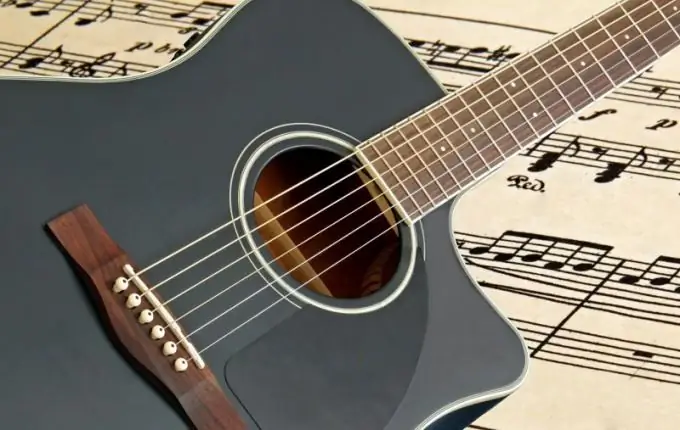The selection of chords will not cause difficulties for a musician, especially if he has perfect pitch. First of all, beginners will have to sweat. But this skill, if desired, can be developed (as well as hearing).

Instructions
Step 1
First of all, you should have a pretty good idea of what chords are and what they are. And, of course, be able to play them. This does not mean that you can easily pick them up right away. Playing by notes doesn't mean knowing how to identify them by ear. But the basic skills still have to be (just like knowing the letters of the alphabet simplifies the construction of words). And the more you play, the easier it will be for you to find the accompaniment. To get started, get some experience playing songs with chords you already know (check out songbooks or related sites for guitarists).
Step 2
Listen to the entire song before choosing the accompaniment. Most of the pieces of music have a repeating structure, divided into so-called "squares" (in the slang of the musicians themselves - a repetitive change of chords). There are chord chains (i.e. squares) that are constantly repeated in verses, in choruses. Track the change of these chains throughout the song.
Step 3
Notice in which parts of the melody the chords change. Listen to the song in chunks, trying to determine the root note in each chord, i.e. the note with which the chord is built. Once you have identified, sing this sound, so it will be better remembered. Then "find" it on one of the bass strings (it should sound in unison with the chord in the song itself). Build all consonance from the found note. There should be no difficulty here. So, if you have determined that the root tone is "C" ("C" in the letter notation), then the chord will be, respectively, C or Cm (depending on whether it is major or minor). As a guide, keep a simple chord board in front of you that shows you how to play them, so you don't have to build them yourself. Now listen to the song further, track where the chord you already know changes to another. And in the same way, chant the next one, find its main tone, etc. Write down all chords using letter symbols (C, D, Fm, etc.). At some point, you will notice that the chord progression has started repeating. From now on, the selection process will go much faster, because the basic accompaniment is already there. But the chorus will most likely have to be picked up separately, in the same way.
Step 4
Most often, songs are written in some key. Knowing this will make it easier for you to pick up the accompaniment. Key is often determined by the final chord or note, sometimes by the first. This knowledge will help you a lot if you are already familiar with basic musical notation (so learn notes and scales!). Knowing, for example, that the song was written in C major, you will no longer act blindly, as before, and immediately begin to build chords from the notes included in this key (that is, for example, from the note "F", and not "F-sharp", "B", not "B-flat", etc.). And train your hearing and auditory memory. Over time, the process of "finding" the desired chord on the guitar neck will not take you even a minute.






